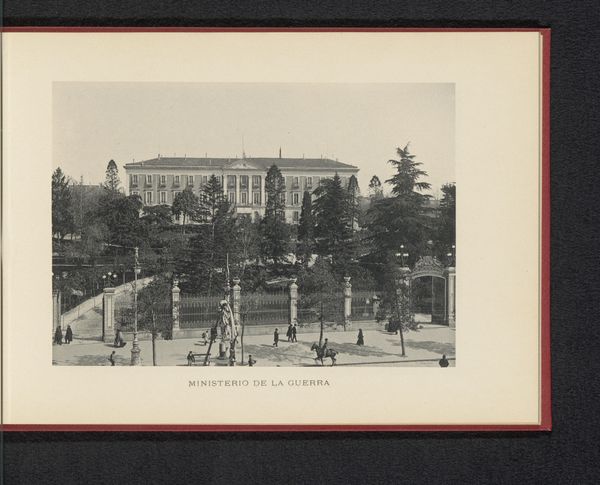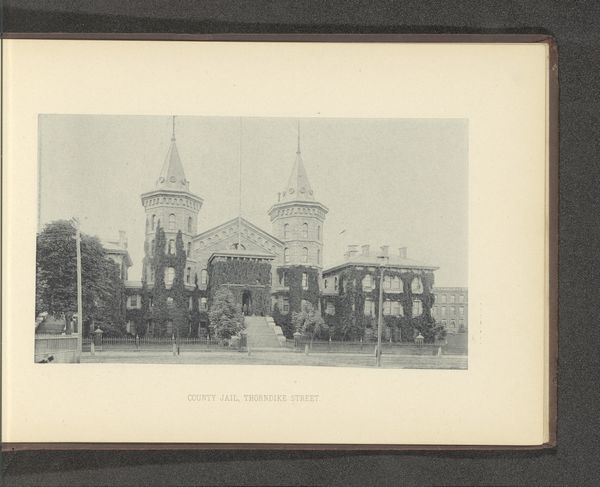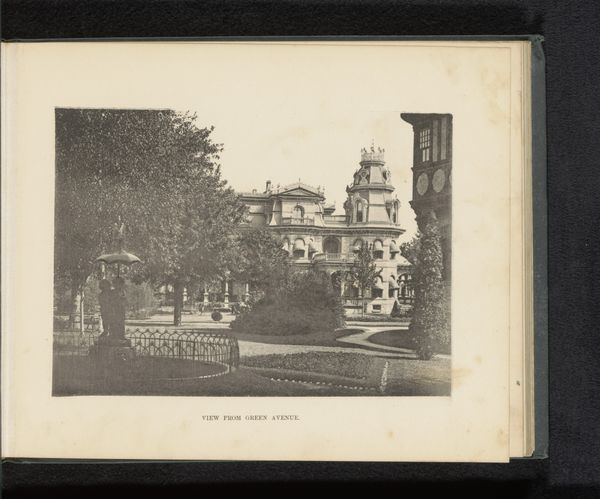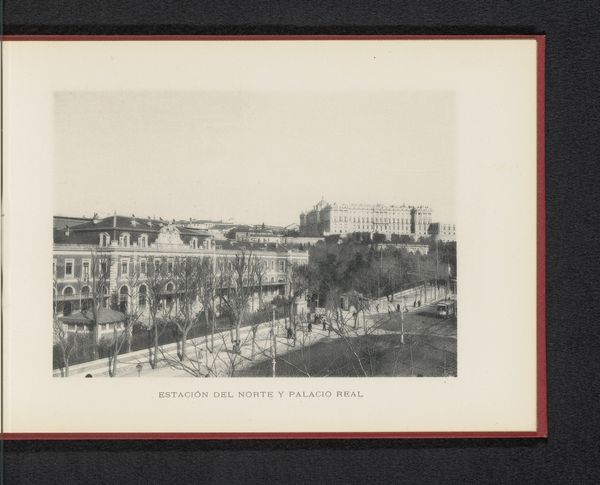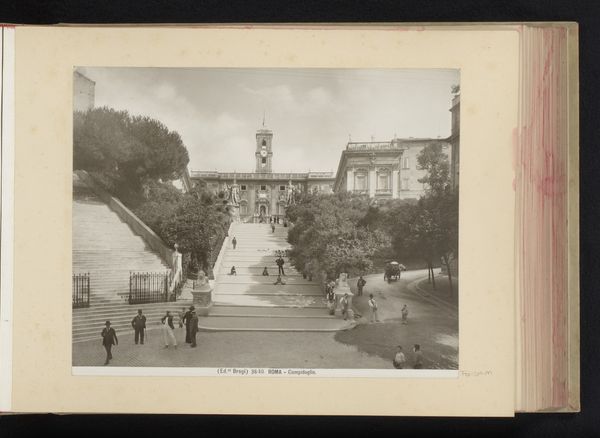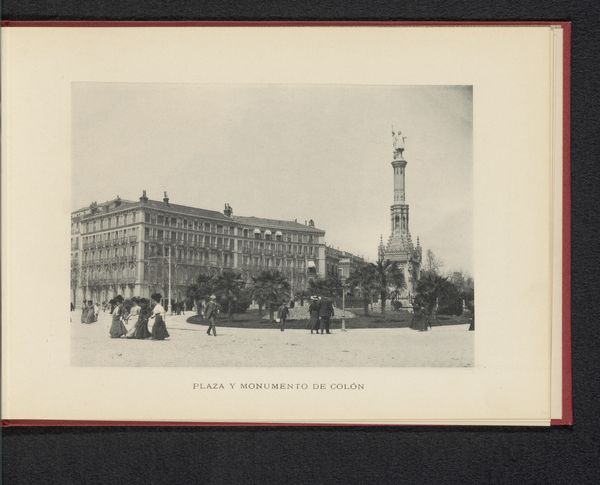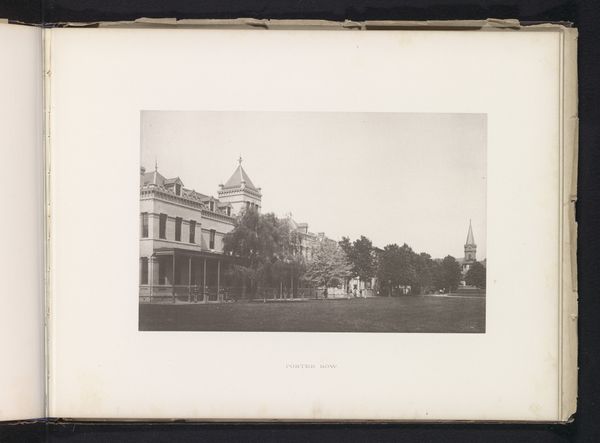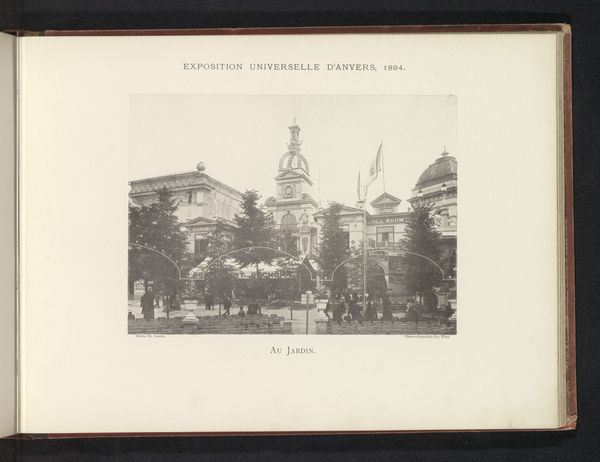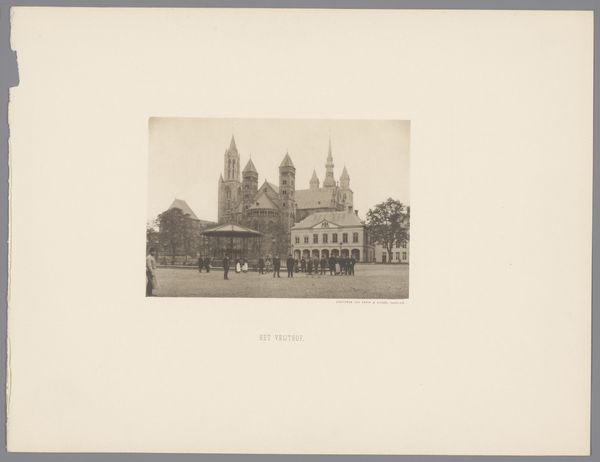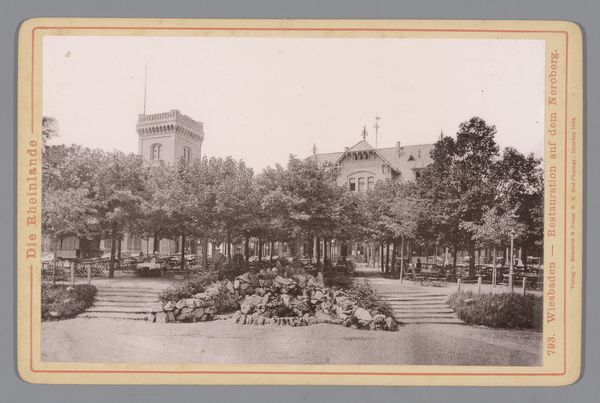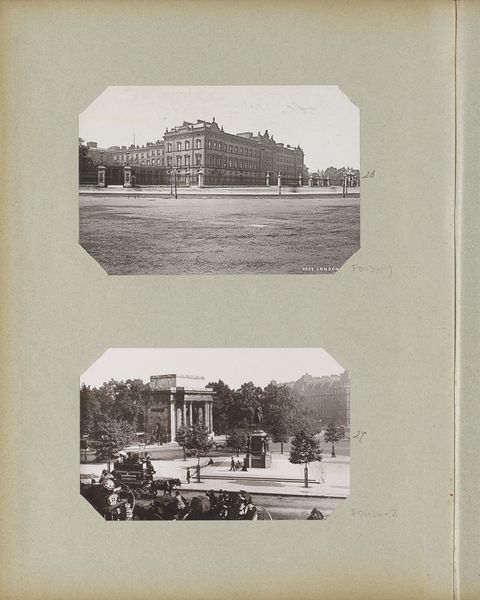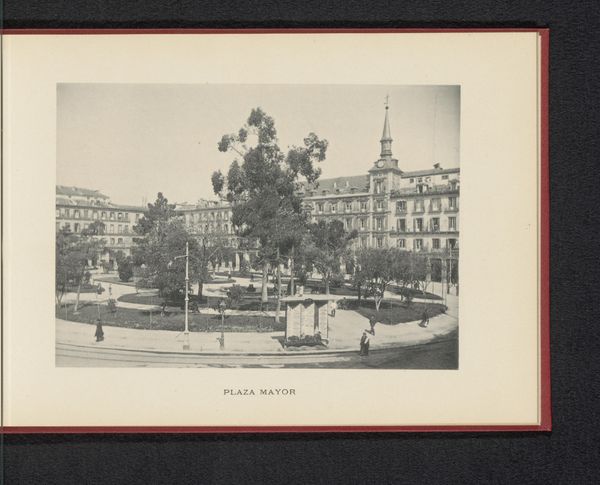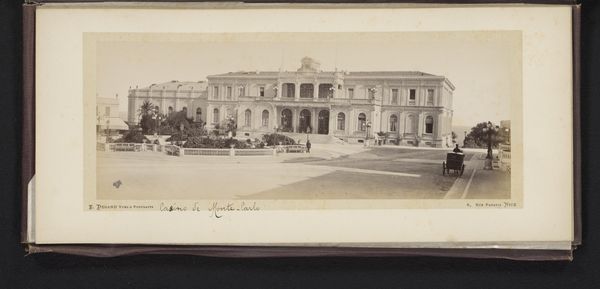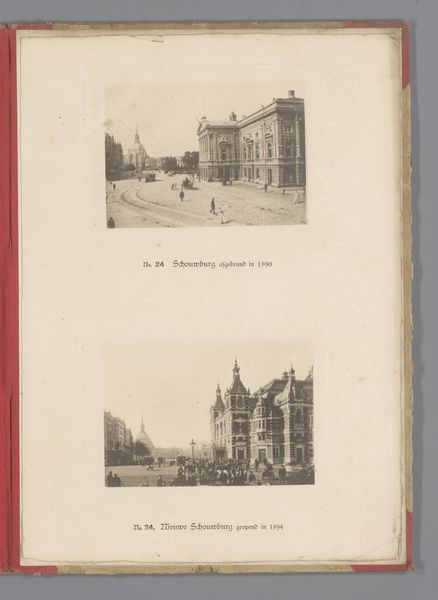
Gezicht op de San Jerónimo el Real en het Museo Nacional del Prado in Madrid c. 1888 - 1898
0:00
0:00
print, photography, albumen-print
# print
#
neo-impressionism
#
photography
#
cityscape
#
albumen-print
#
realism
Dimensions: height 115 mm, width 162 mm
Copyright: Rijks Museum: Open Domain
Editor: Here we have "View of San Jerónimo el Real and the Museo Nacional del Prado in Madrid," a photograph by Hauser y Menet, created around 1888 to 1898. It's an albumen print, and the cityscape feels almost… staged, even though it’s a photograph. What do you see in this piece? Curator: I see a photograph deeply embedded in its historical moment, a moment of rapid urban transformation and national identity formation. Photography itself was democratizing art, making images accessible beyond the elite. What's striking to me is the juxtaposition of the Church, representing traditional power structures, alongside the Prado, a symbol of national cultural heritage and enlightenment ideals. How do you interpret that relationship in the context of late 19th-century Spain? Editor: That's interesting. I hadn't really considered it in terms of clashing ideologies. I suppose I just saw them as…buildings. Is it really a deliberate statement, or just happenstance that they're next to each other? Curator: I think it's both. The placement certainly existed. However, consider that Hauser y Menet consciously chose this vantage point, this composition. The very act of photographing these structures together invites a dialogue about Spain’s evolving identity. It's not just a pretty picture; it's a document imbued with social and political undertones, revealing much about how Spain saw itself on the cusp of the 20th century. Who had access to this space, and what were they seeing? Editor: So, it's not just about what's in the photo, but who is in it, or not, and why that matters. I never really thought about photography that way before. It seems more layered now. Curator: Precisely! Analyzing what the artwork does *not* show—the absences and exclusions—is just as vital as what is explicitly depicted. What power dynamics might be in play? Editor: This makes me consider the historical narratives constructed around images like this. Thank you! Curator: And thank you. Thinking about art's relationship to power can change how you interpret images for a lifetime.
Comments
No comments
Be the first to comment and join the conversation on the ultimate creative platform.
